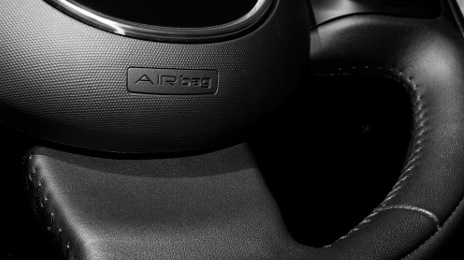Analysts weigh implications of new airbag investigation

Following the recent recall news surrounding the various incidents related to Takata airbag inflator ruptures, it appears as though the National Highway Traffic Safety Administration is playing it extra careful with its recent investigation into another set of incidents involving airbag inflators from a different manufacturer.
NHTSA opened an investigation on Monday involving two separate incidents connecting air bag inflator ruptures involving equipment supplied by ARC Automotive.
Michelle Krebs, Autotrader’s senior analyst, commented on the potential negative effects bringing the woes of a second airbag manufacturer into the fold could have on the industry if the investigations lead to a recall.
“Problems with a second airbag component manufacturer could cause automakers big headaches, since there are so few suppliers of airbags and airbag components as it is,” Krebs said. “For consumers, it could slow the recall repairs even more with such a limited supply base.”
The first incident, which the Office of Defects Investigation received a complaint about in December 2014, occurred in 2009 due to a reported airbag inflator rupture in a 2002 Chrysler Town & Country minivan. According to NHTSA, ODI contacted Fiat Chrysler Automobiles to conduct a search for similar incidents and based on info obtained from FCA and the results of the search determined that the 2009 incident was a single, isolated event.
The second incident, which ODI received notification about last month via notification from Kia regarding a lawsuit, involves the alleged rupture of an airbag inflator in a 2004 Kia Optima in 2014.
According to NHTSA, the investigations made by ODI revealed that both the 2009 and 2014 incidents involved airbag inflators supplied by ARC Automotive.
NHTSA explains in its report that although the inflators involved with both incidents were made by ARC, it is not clear if there is a common root cause in these incidents. ODI’s investigation is, at this point, ongoing and seeks to collect all known facts from the involved suppliers and vehicle manufacturers. The current affected population, according to NHTSA, includes 420,000 model year 2002 Chrysler Town & Country vehicles and 70,000 model year 2004 Kia Optima vehicles.
To read the full NHTSA report, which explains the specific manufacturing processes and circumstances that may have led to the airbag ruptures, click here.
Karl Brauer, senior analyst at Kelley Blue Book, commented on the message these actions reveal about NHTSA’s goals.
“This sends a strong, and welcome, message from NHTSA that suspicious injuries from vehicle safety systems will be closely examined,” Brauer said. “Hopefully a new standard of investigative effort has been set by the government’s primary automotive safety agency.”
Brauer’s colleague and fellow KBB analyst, Akshay Anand, hopes that the NHTSA investigation doesn’t reveal a more serious underlying problem.
“Amidst the saga of Takata airbags, we can only hope the investigation into ARC doesn’t yield much,” Anand said. “It could be damaging if there is a second widespread airbag recall, and by now, many consumers have recall fatigue. As a result, NHTSA and other associations have two tasks on their hands: ensuring they conduct a thorough investigation, and if there are any potentially dangerous results, informing an increasingly information-saturated public that this in fact is something extremely serious.”

 View The Latest Edition
View The Latest Edition

